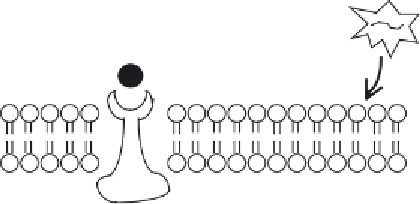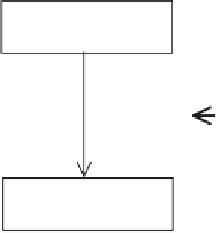Biomedical Engineering Reference
In-Depth Information
Invading
virus
IFN binds its
receptor, inducing
synthesis of eIF-2α
protein kinase
Cell
membrane
eIF-2 protein kinase
(inactive)
α
Cell
cytoplasm
Viral-derived
dsRNA
eIF-2 protein kinase
(active)
α
P
eIF-2
(phosphorylated)
α
eIF-2
α
Inhibits ribosome
formation
Figure 8.6
Outline of how the eIF-2
α
protein kinase system promotes an antiviral effect
sentries, warning other cells of the viral attack. Most body cells express the type I interferon re-
ceptor; thus, the released IFN-
will induce an antiviral state in such cells.
The ability of interferons (especially type I interferons) to induce an antiviral state is unlikely
to be solely dependent upon the enzymatic mechanisms discussed above. Furthermore the 2
α
or -
β
A
n
synthetase and eIF-2α kinase systems may play important roles in mediating additional interferon
actions. The ability of such systems to stall protein synthesis in cells may play a role in interferon-
induced alterations of cellular differentiation or cell cycle progression. They may also be involved
in mediating interferon-induced anti-proliferative effects on various transformed cells.
-5













Search WWH ::

Custom Search